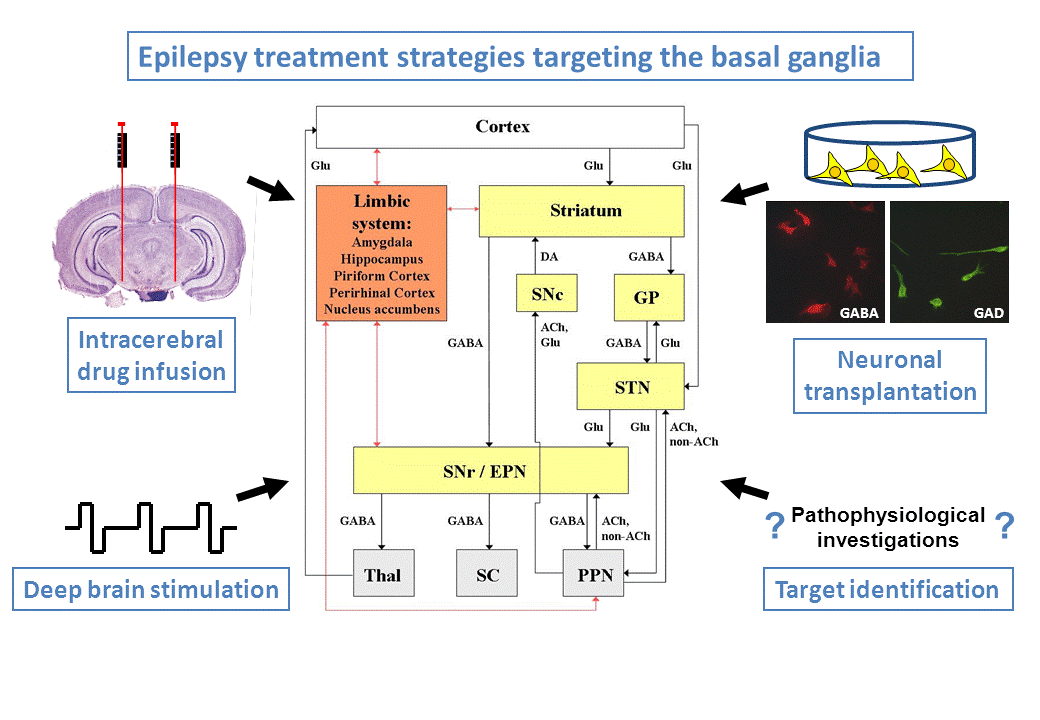Experimental epilepsy research: Basal ganglia dysfunctions and intracerebral therapeutic treatment approaches
The basal ganglia (nuclei basales) are anatomically and functionally connected subcortical brain regions, which are involved in motor, cognitive, and limbic functions. Dysfunctions of the basal ganglia play an important role in various neurological diseases such as different movement disorders, but also in epilepsies. The basal ganglia and associated regions are involved in propagation and modulation of epileptic seizure activity emanating from the limbic system. Furthermore, the basal ganglia show plastic network changes in response to repeated seizure activity and they are involved in mechanisms of pharmacoresistance in epilepsies.
We investigate the physiology and pathophysiology of the basal ganglia and associated brain regions in epilepsies on the network level, neuronal level, and subcellular level by using various experimental methods (neurophysiology, immunohistochemistry, neurochemistry, cell biology). Apart from pathophysiological studies, our attention is focused on experimental-therapeutic manipulations of the basal ganglia. Especially local, intracerebral pharmacological interventions (acute and chronic), neuronal transplantations, and high frequency deep brain stimulations are studied. Our aim is to develop new approaches for the treatment of epilepsies in animals and humans.

In DFG-supported studies, we work on different intracerebral treatment strategies. For example, we perform preclinical studies, in which appropriate drugs are infused chronically or in which appropriate neuronal cell lines or embryonic neuronal precursor cells are grafted into specific basal ganglia regions with the aim to induce long-lasting anticonvulsant effects.
![[Translate to English:] DFG Logo](/fileadmin/32_Pharmakologie/Bilder/dfg_logo_blau_01.jpg)
In the project „Targeted drug microinfusion into the subthalamic nucleus as a strategy to treat epilepsies“ (GE1103/9-1), we refine the chronic, intracerebral pharmacotherapy as a strategy to treat intractable epilepsies. Several rationally chosen drugs and treatment regimens will be investigated.


